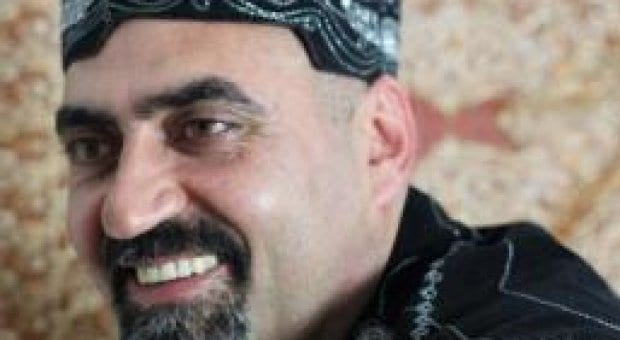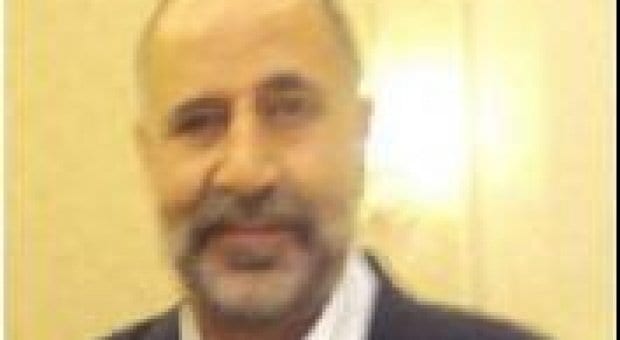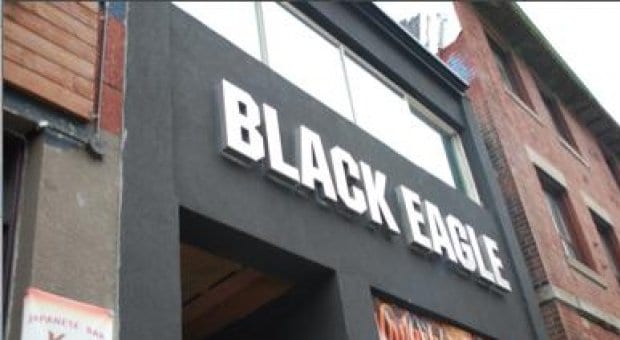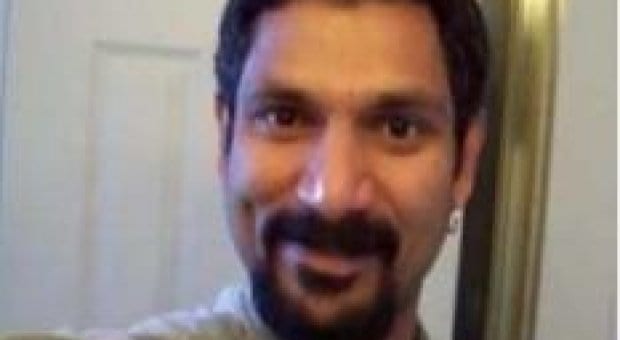
Abdulbasir "Basir" Faizi.

Majeed "Hamid" Kayhan.

The Black Eagle on Church Street, a bar two of the three missing men frequented. Credit: Andrea Houston
More details are emerging about three missing men who vanished from the Church-Wellesley Village.
Toronto Police Service investigators say the three missing-persons cases are connected through “similar ethnicities.” Detective Deb Harris, who is leading the investigation, says the three men were not all openly gay. “They frequented the Church and Wellesley area and lived similar lifestyles.”
Skandaraj “Skanda” Navaratnam, 40, was last seen on Sept 6, 2010, after leaving Zipperz with an unknown man. He was reported missing on Sept 16. What makes his disappearance particularly troubling for police is that Navaratnam left a new puppy unattended, which is unusual, says Constable Tony Vella.
Abdulbasir “Basir” Faizi, 44, went missing on Dec 29, 2010. His vehicle was found abandoned in the Village, which is also where he was last seen. According to police, his bank records show he last used his debit card at the Hero Burger on Church Street.
Majeed “Hamid” Kayhan was last seen on Oct 14, 2012, and was reported missing to police on Oct 25 by his son, police say.
Harris says the three missing men have probably never met, but she can’t say for sure. “There is nothing that links the three men to each other.”
El-Farouk Khaki is a refugee and immigration lawyer who often represents queer people fleeing violence. He is also the founder of Salaam, a Toronto-based queer mosque, and a leader in the local queer Muslim community.
Khaki cautions police against ethnically profiling the men based on the colour of their skin or their “lifestyle.” The three men are actually not “ethnically similar,” he says. Rather, they share a similar skin colour.
“By looking at their names, and seeing the pictures, I surmised that [Faizi and Kayhan] are either Afghani or Pakistani,” he says. “They are probably Muslim.”
On Faizi’s Facebook page, he lists his hometown as Herat, Afghanistan.
Navaratnam, on the other hand, is from Sri Lanka, and Khaki says that likely makes him Tamil.
“So, the direct connection between ethnicity is not there,” he says. “Those are different [geographic] areas. Visually, they would seem quite similar, because they are brownish in tone, and they all have facial hair.”
When asked about this discrepancy, Harris clarifies, “Yes, the men are of similar complexions, not ethnicity.”
Meanwhile, at the Black Eagle on Church Street, where Kayhan was a regular, owner Carlos Filetti remembers seeing him often, and barfly Gary Livingstone knew him well. Livingstone describes Kayhan as “out-ish.”
“He was out to the gay community in the Village but not out to his family, who is Afghani,” he says. “His gay life was very compartmentalized. He came to the Village and was able to be who he really was, which was separate from his responsibilities with his family.”
Livingstone says Kayhan once said that his family lives in Mississauga, but he didn’t talk about them much.
“He just disappeared off the face of the Earth,” he says. “This is my local [pub], and it was one of his. He would come here and drink, as often as they’d let him. He was very closed off.”
Through their chats, Livingstone came to understand that Kayhan was dealing with systemic cultural homophobia, along with racism, that prevented him from living a fully out life. Those pressures forced Kayhan to live part of his life in the closet, and that was very difficult for him.
Livingstone also knew one of the other missing men, Navaratnam, who lived downtown as an openly gay man, he says.
“I’m not sure I understand the connection between the two men that I knew,” he says. “They were very different. They are about 10 years apart in age. Different ethnicity. Different religion. Different life experiences altogether.
“[Navaratnam] had a life in gay society. He knew people and was involved. Whereas for [Kayhan], this was his alternate identity. This is where he came to be gay.
“They were the guys I see when I go for a drink. So you know a certain amount about them, but not a huge amount.”
Being “out-ish,” especially for some new Canadians, is not uncommon. People who come to Canada from homophobic countries often take years to venture out of the closet, if they ever do, he says. “It’s all part of the process,” he adds.
Faizi has a similar family situation to Kayhan. His sister-in-law Nijiba tells Xtra that his family is very worried. She knew nothing about the connection to the Village. She says Faizi has a wife and two daughters who live in Mississauga.
On the day he went missing, she says, Faizi was at work. He worked in a Mississauga factory, but she didn’t know the company name or his job at the factory.
“He usually came straight home after because they make him work 12-hour shifts,” she says. “He worked night and day . . . That night, he called my sister, his wife, and said, ‘I’m coming home late tonight.’ She asked him why, and he said he is going out with a friend from work.”
She says that his wife was worried and called around midnight but couldn’t reach him. He never called home again. “I hope one day we will hear good news,” she says.
Peel Regional Police Constable Thomas Ruttan says officers in Peel are assisting Toronto police and have conducted an extensive investigation into Faizi’s background, which is ongoing. “We maintain contact with his family, as they reside in our region,” he says.
Unlike the other two men, Navaratnam has a network of friends and lovers in the gay community who started searching for him after he disappeared. Signs were posted around the Village and in Cabbagetown, where Navaratnam lived. They also started a Facebook page dedicated to finding him, which has since been shut down.
At the time that he went missing, his friend Jody Becker told Xtra that Navaratnam was a regular at Zipperz, Pegasus and the Black Eagle.
Navaratnam’s story is very different from the other two missing men’s. Steamworks manager John Brodhagen, who was also a good friend of Navaratnam, says it’s possible he has gone into hiding.
“When he disappeared, it was a shock to all of us,” he says. “I think something probably scared him. Skanda was a political refugee in Canada from Sri Lanka. He was brought here because he got into some trouble with the Sri Lankan government. It was political. I think he was [an activist].”
Brodhagen does not know when Navaratnam came to Canada or what legal issues surrounding his departure led him to flee. “I know he couldn’t stay in Sri Lanka because he would have been killed.”
Livingstone says it was not unusual for Navaratnam to disappear for short periods of time, but, he says, three years is exceptionally long.
Harris says police have done an extensive background search on Navaratnam, including accessing “numerous judicial authorizations” to try to determine his whereabouts, such as immigration, but have discovered no leads from that.
“The key connection for us is that all three disappeared from the Church and Wellesley area, they have family and friends who are concerned about them, and everything that we’ve done from the onset, there is nothing that tells us where these three people are,” she says.
She says it’s unusual for missing-persons cases to be outstanding for this long. “We have also been looking at missing-person cases across Canada.”
Khaki says police should continue to expand the search by looking at cold cases and outstanding missing-person reports, in Toronto areas outside the Village and beyond. If these three men are indeed connected, Khaki says, it’s important for investigators to understand the cultural sensitivities and discrimination that explain why men like Kayhan and Faizi live double lives. With that in mind, it’s possible other missing-persons cases could be connected as well.
“I don’t think it’s problematic that police are looking at all possibilities, but I think they need to cast their net a little bit wider,” he says. “Start looking to see if other people have been reported missing from other areas. If there’s people connected to this community and also living closeted lives, the person who reports them missing could change how it is investigated.”
Some media outlets have been reporting that police are investigating a connection to the recent arrest of a man in Peterborough who is facing dozens of charges in child porn. But Harris says that is not accurate.
“I can certainly tell you that I have found no links between [Peterborough’s] Alex Brunton and these three missing males,” she says. “Peterborough police are not working with us in regards to this missing-persons case.”
Harris and other officers have been out canvassing residents and businesses on Church Street and urge anyone with information to contact Toronto police. A dedicated tip line has been set up at 416-808-5110, or tips can be made anonymously at 416-222-TIPS (8477).
Legacy: January 29, 2018 12:34 pmAn earlier version of this story incorrectly stated that Skanda Navaratnam went missing on Sept 16, 2010. He was actually last seen on Sept 6, 2010 and reported missing on Sept 16.

 Why you can trust Xtra
Why you can trust Xtra


